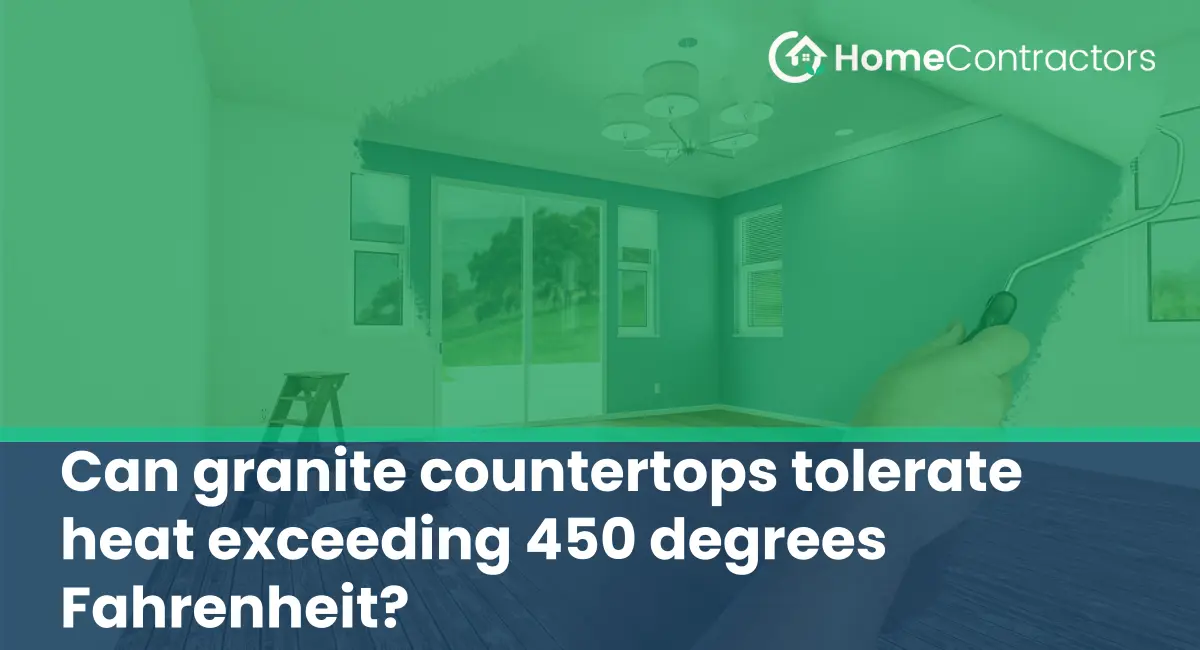Granite countertops have become a popular choice for many homeowners due to their durability, aesthetic appeal, and ability to withstand everyday wear and tear. However, one common concern among homeowners is whether granite countertops can tolerate heat exceeding 450 degrees Fahrenheit. In this article, we will delve into the properties of granite, its heat resistance, and the necessary precautions to take when it comes to high temperatures.
Understanding Granite and its Composition
Granite is a natural stone formed by the slow cooling and solidification of magma beneath the Earth’s surface. It is predominantly composed of quartz, feldspar, and other accessory minerals. The crystalline structure of granite gives it its distinctive strength and durability, making it an ideal choice for countertops.
Heat Resistance of Granite Countertops
Granite is known for its excellent heat resistance and can generally withstand temperatures up to 450 degrees Fahrenheit. This makes it highly resistant to any normal household cooking or baking temperature. Resting hot pots, pans, or baking dishes directly on granite countertops should not cause any damage or cracking.
However, it is essential to note that sudden and extreme temperature changes can potentially cause thermal shock and crack the granite surface. For instance, placing a cold object on a hot granite surface or vice versa can create significant stress on the stone. Therefore, it is crucial to take some precautions to maintain the integrity of your granite countertops when dealing with high temperatures.
Precautions to Take
1. Use Trivets or Hot Pads:
To protect your granite countertops from extreme temperatures, use trivets or hot pads when placing hot cookware or bakeware directly on the surface. This simple precaution will create a barrier and insulate the granite from direct contact with the heat source, avoiding potential thermal shock.
2. Gradual Temperature Changes:
To avoid any risk of thermal shock, make sure to introduce temperature changes gradually. For instance, when removing a hot dish from the oven, allow it to cool on a hot pad or trivet before placing it on the granite countertops. Similarly, when using granite as a surface for cooling baked goods, ensure they are first placed on a cooling rack rather than directly on the countertop to avoid heat concentration.
3. Avoid Extreme Heat Sources:
While granite can withstand normal cooking or baking temperatures, it is advised to avoid exposing the surface to direct contact with extreme heat sources, such as hot pots or pans coming straight from the stovetop. Always use a protective barrier, even if the temperature is below 450 degrees Fahrenheit, to prevent any potential damage.
4. Regular Cleaning and Maintenance:
Proper cleaning and maintenance play a vital role in preserving the longevity of your granite countertops. Regularly clean spills and stains promptly, as they can compromise the integrity of the stone over time. Using pH-neutral, non-abrasive cleaners specifically made for granite is essential. Furthermore, ensure that any sealants applied to the surface are up to date to provide an added layer of protection.
Granite countertops can generally tolerate heat exceeding 450 degrees Fahrenheit without any adverse effects. However, it is essential to take necessary precautions to maintain their integrity and prevent thermal shock. By using trivets or hot pads, avoiding sudden temperature changes, and implementing regular cleaning and maintenance practices, you can ensure the longevity and beauty of your granite countertops for years to come.
